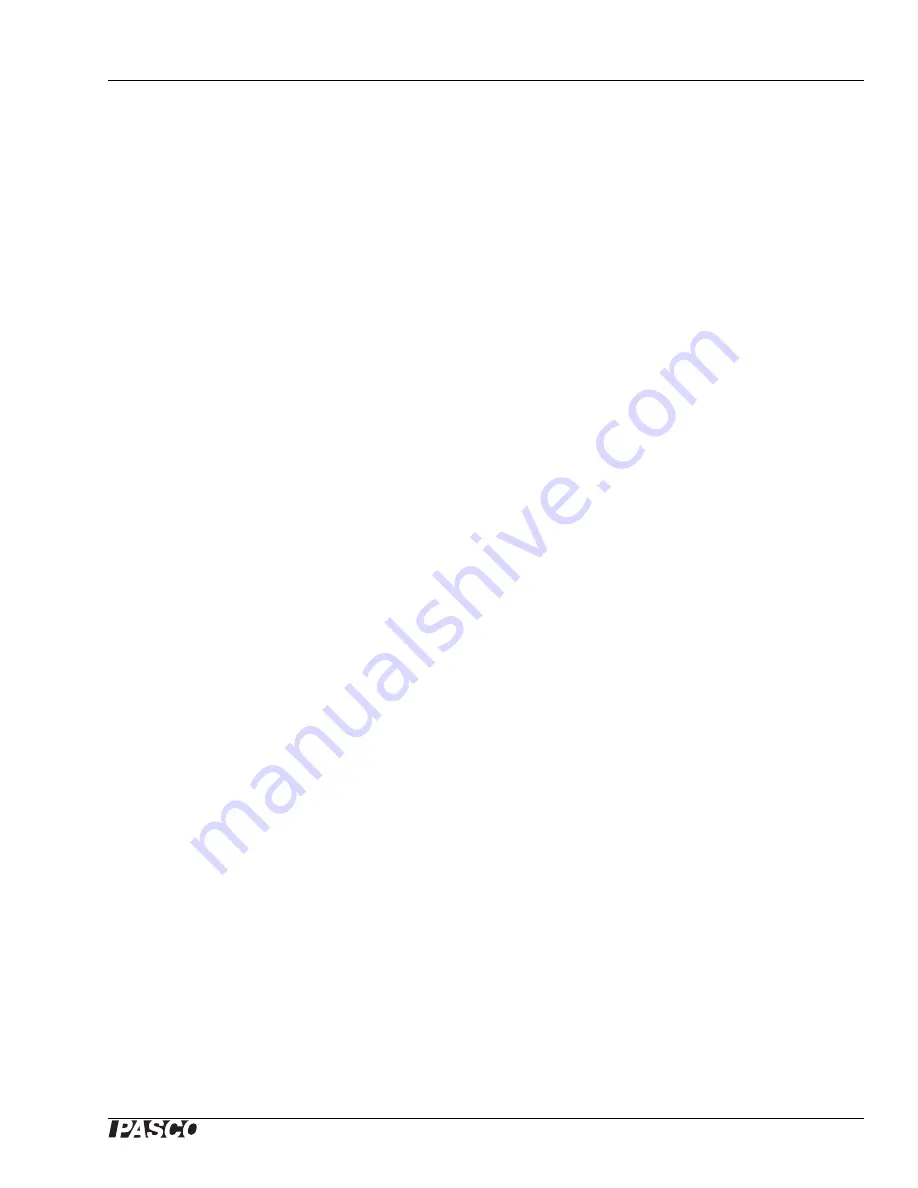
Model No. WA-9867
Experiment 2: Resonance Tubes
25
®
2.
Set up the Sine Wave Generator and the speaker as before. Start with the frequency at 50 Hz
and slowly increase it using the coarse (1.0) knob. Find the frequency of the fundamental (to
the nearest 1 Hz) as you did before. Why is the frequency of the fundamental higher for the
open tube than it was for the closed tube?
3.
Calculate the wavelength from the frequency and the speed of sound. Use Equation
2
, and the
speed of sound that you found in Step 8 of Part I. (You do not need to know the length of the
tube).
Look at the diagram of the fundamental (first harmonic), and use that information to calculate
the
effective length
of the tube.
4.
Use a meter stick to measure the actual length of the tube. How does it compare to the
effective length? How big is the end effect? (The effect is about twice as big compared to the
previous tube because there are two open ends.)
5.
To store the fundamental frequency in the Sine Wave Generator’s memory, press and
hold
the
Store/Exit key until the display blinks. Press the up arrow key to increment the frequency up
to the second harmonic. Move the tube away and back again to convince yourself that it is at
resonance. Repeat for the third harmonic. Draw a companion sketch of the waveform
diagrams on page 24 showing the
third
harmonic (remember that L is constant).
6.
Return the frequency to the fundamental, and then replace the open tube with the closed tube.
Is it still at resonance? Using the coarse frequency knob, decrease the frequency until you find
the fundamental resonance of the closed tube.
7.
Calculate the ratio of the open-tube frequency to the closed-tube frequency. What should this
ratio be? Why.
8.
Press and
hold
the Store/Exit key to store the fundamental frequency of the closed tube. Press
the up arrow key to increment the frequency up to the second harmonic. Do you hear a
resonance? Move the tube away to make sure. Is it louder with the tube near? Press the up
arrow key again to increment the frequency up to the third harmonic. Can you hear resonance
now? Explain why.
Further Investigations
1.
Why does a tube open at both ends play all the harmonics, but a tube with one end closed only
plays the odd harmonics (1, 3, 5, etc.). What is the relationship between the tube length and
the wavelength for the third harmonic of a closed tube?
2.
Draw a companion sketch of the waveform diagram in Part I on page 22 (closed tube)
showing the third harmonic in a tube of the same length. Remember that you must still have a
node at the closed end and an anti-node at the open end. Why is this set of pictures different
from what you drew in Part I? In each case, what is forced to stay constant, and what is
allowed to change?
3.
If twirlable Sound Tubes are available, twirl one around in a circle. As you spin it at different
speeds you will hear different notes. How are these notes related? Spin a tube of different
length. Which tube plays the lower frequency? How is tube length related to frequency?
Содержание WA-9867
Страница 14: ...Sine Wave Generator Applications 14 ...
Страница 26: ...Sine Wave Generator Resonance Tubes 26 ...
Страница 32: ......






















